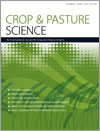CP12128The future of grain legumes in cropping systems
Future cropping systems will require more reliance on economic and environmental friendly practices. Grain legumes, which do not require nitrogen fertiliser and produce seeds that have many uses as food, feed, and industrial feedstock, are proposed to have an increasing role in cropping systems. Expansion of grain legume species will have major benefits for farmers and consumers in both developed and developing countries around the world.




